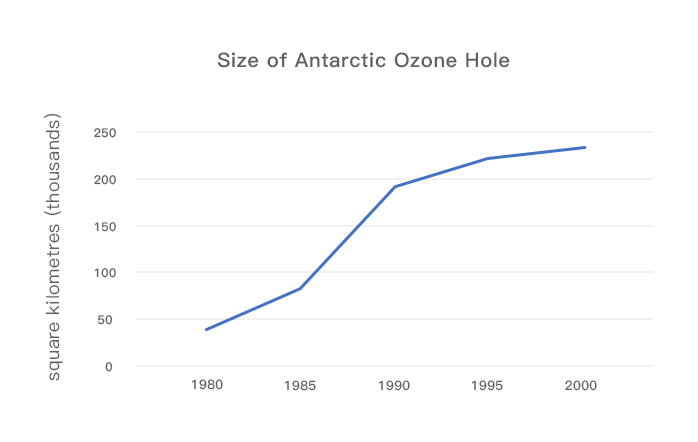Writing Feedback /
Ielts writing task 2 - The Antarctic ozone hole [2]
The chart presents the ozone hole size in the Antarctic and three different harmful gasses that damaged the Antarctic ozone in two decades. From an overarching perspective, it is evident that the size of Antractic ozone hole grew significantly. The production of NO2 and H2O2 increased, but the average release of Freon declined.
The scale of the ozone hole was noticeable rose from 50,000 km to 230,000 km over the whole period. Particularlly, during 1985 to 1990, it was accelerated from 80,000 km to 190,000 km which four times big than 1980.
In 1980, Freon was the most produced gase, with nearly 150 thousands metric tonnes, in next five years, it was rocketed considerably to 200. From 1985 to 2000, it decreased rapidly to just over 20, becoming the least produced one. Furthermore, NO2, at the start of the period, had little under 100 thousands metric tonnes of production, this grew slightly until 1985, with approximatly 110, and in the last five years, it rose steadily to around 160.

IMG_4523.PNG

IMG_4524.PNG


